Closed Circuit Cooling Tower
Closed Circuit Cooling Tower is a type of heat exchanger that combines the functions of a cooling tower and a heat exchanger in a single unit. In this system, process fluid flows through a coil or heat exchanger inside the tower and is cooled by air and water that circulate around the outside of the coil. This design ensures that the process fluid remains in a closed loop, preventing it from being exposed to outside contaminants.

Closed Circuit Cooling Tower
Operation of
- Heat Transfer: Process fluid, such as water or a specialized coolant, flows through heat exchanger coils inside the tower.
- Water Circulation: Water is sprayed over the coils or flows around them, absorbing heat from the process fluid through evaporative cooling.
- Air Flow: Induced or forced draft fans draw air through the tower. The air absorbs heat from the water, which is then discharged into the atmosphere.
- Evaporation: As water evaporates from the heat exchanger coils, it removes heat from the process fluid, cooling it down.
- Closed Loop System: Process fluid remains within a sealed loop, preventing contamination and maintaining purity.
- Water Treatment: Treat circulating water to prevent scaling, fouling, and biological growth, ensuring optimal performance and longevity.
- Efficiency: Designed for efficient heat transfer, reducing energy consumption and operational costs compared to open cooling systems.
Closed Circuit Cooling Tower
Types of
- Induced Draft Cooling Tower
- Forced Draft Cooling Tower
- Crossflow Cooling Tower
- Counterflow Cooling Tower
- Hybrid Cooling Tower
- Dry Cooling Tower
- Wet-Dry Cooling Tower
- Modular Cooling Tower
- Packaged Cooling Tower
- Custom-Built Cooling Tower
Closed Circuit Cooling Tower
Advantages of
- Contamination Prevention:Closed circuit cooling towers keep the process fluid isolated from external contaminants, ensuring purity and minimizing the risk of corrosion, scaling, and biological growth.
- Reduced Maintenance:By preventing contamination and minimizing scaling and fouling, closed circuit cooling towers require less maintenance compared to open systems. This leads to lower downtime and operational costs.
- Water Conservation:These towers recirculate water within a closed loop, significantly reducing water consumption compared to open cooling systems, which continuously lose water through evaporation and blowdown.
- Energy Efficiency:Closed circuit cooling towers typically operate more efficiently than open systems due to better control over heat transfer processes. This efficiency translates into lower energy consumption and reduced operating costs.
- Environmental Benefits:Lower water usage and reduced chemical treatments contribute to a smaller environmental footprint. Closed circuit systems also minimize the risk of chemical discharge into the environment.
- Longevity of Equipment:The design of closed circuit cooling towers, including the use of corrosion-resistant materials and efficient heat exchange mechanisms, promotes the longevity and reliability of equipment.
Other Cooling Towers We Manufacturer
Square Type Cooling Tower
Square Type Cooling Tower functions on the principle of induced draft counter flow operation. The fan generates vertical air movement that flows upwards on the tower and across the fills, opposing the water flow.
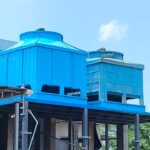
Round Type Cooling Tower
The Round Type Cooling Tower, constructed from FRP, boasts resistance to corrosion, resilience against extreme vibrations, and the ability to withstand high wind loads. Its design emphasizes efficiency
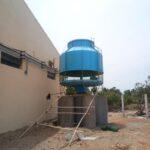
Wooden Cooling Tower
Wooden Cooling Tower are designed to handle water with high levels of dissolved solids (TDS). Hot water from the source is sprayed over
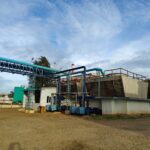
Cross Flow Cooling Tower
Cross flow cooling towers is a cooling system where air flows horizontally through the tower while water flows vertically downward.
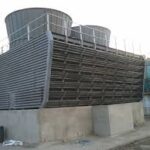
Dry Cooling Tower
Dry Cooling Towers is a type of cooling system used in industrial and power generation processes to remove excess heat without the need for water.
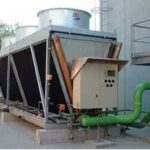
Evaporative Cooling Tower
Evaporative cooling tower are devices used to remove excess heat from industrial processes, power plants, and HVAC systems by using the principle of water evaporation.
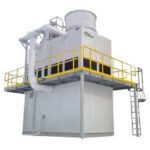
Natural Draft Cooling Tower
Natural draft cooling towers are a type of cooling tower that uses the natural convection of air to cool water.

Cooling Towers We Exported to
Cooling Towers We Export to Czech Republic
Cooling Towers We Export to Denmark
Cooling Towers We Export to Dhaka
Cooling Towers We Export to Estonia
Cooling Towers We Export to Finland
Cooling Towers We Export to France
Cooling Towers We Export to Georgia
Cooling Towers We Export to Germany
Heat Exchangers We Exported to
Heat Exchangers We Export to Campeche
Heat Exchangers We Export to Central Java
Heat Exchangers We Export to Central Province
Heat Exchangers We Export to Central Sulawesi
Heat Exchangers We Export to Chechnya
Heat Exchangers We Export to Chiapas
Heat Exchangers We Export to Chiba
Heat Exchangers We Export to Chihuahua
Industrial Chiller We Exported to
Industrial Chiller We Export to Ireland
Industrial Chiller We Export to Italy
Industrial Chiller We Export to Johor
Industrial Chiller We Export to Kazakhstan
Industrial Chiller We Export to Kedah
Industrial Chiller We Export to Kelantan
Industrial Chiller We Export to Khulna
Industrial Chiller We Export to Kosovo
